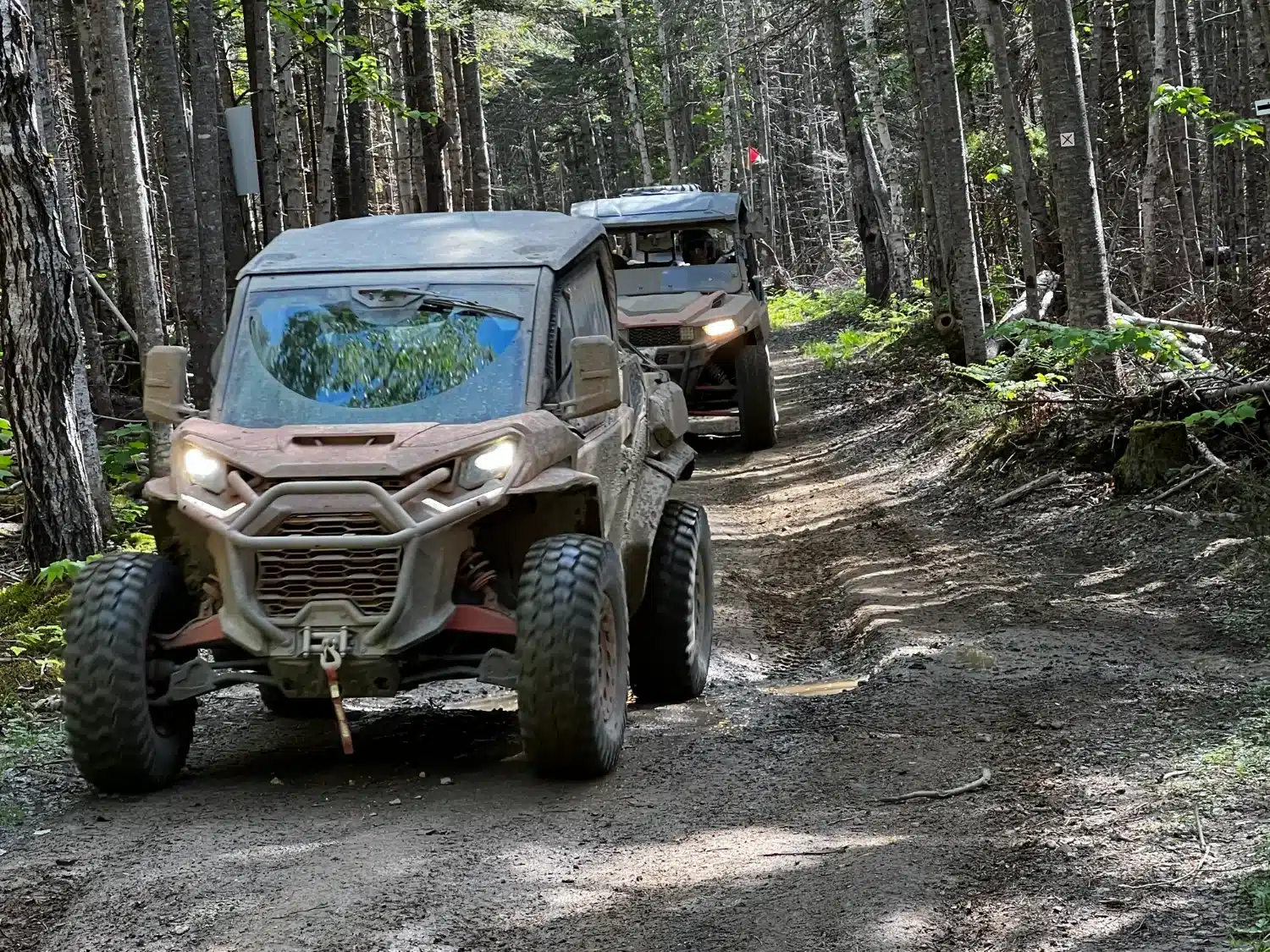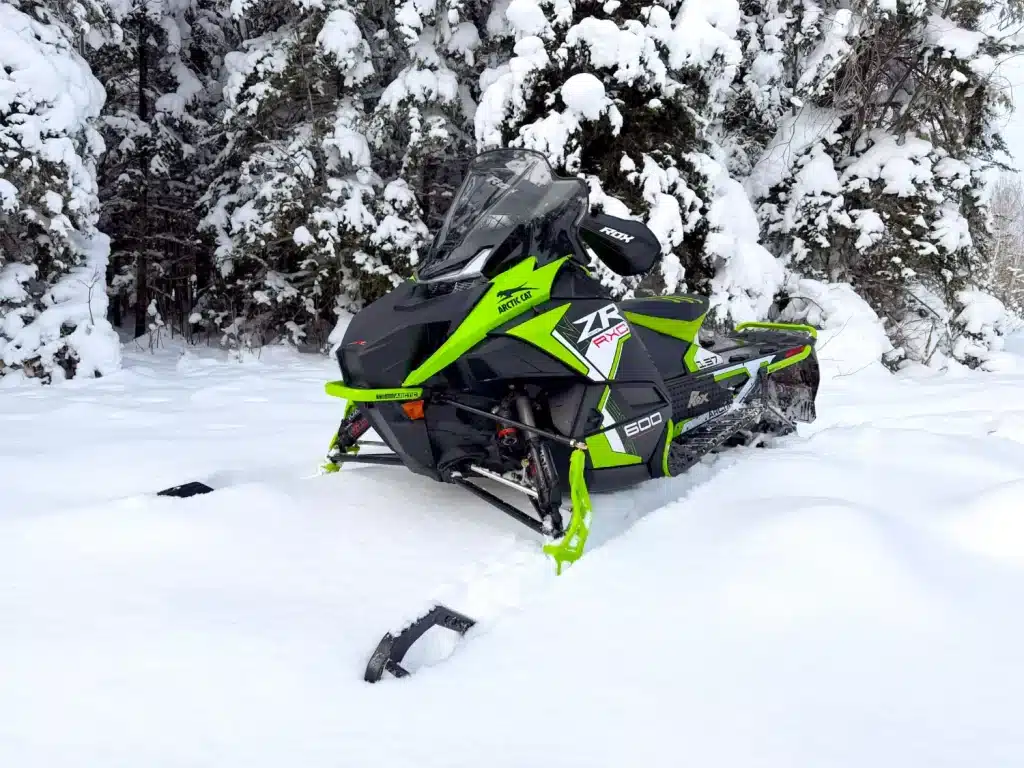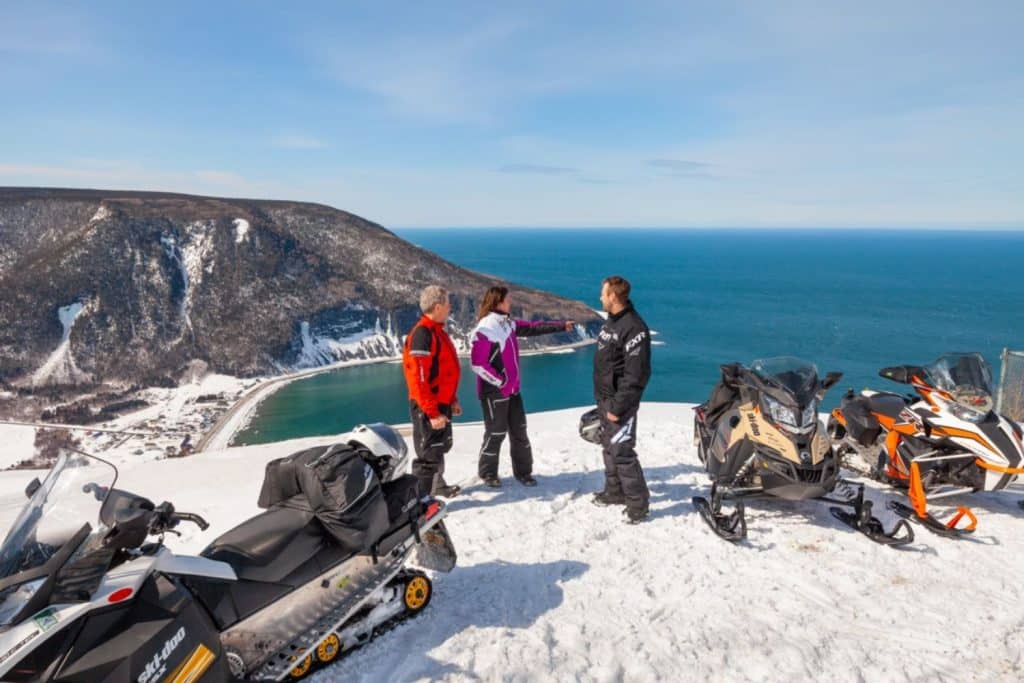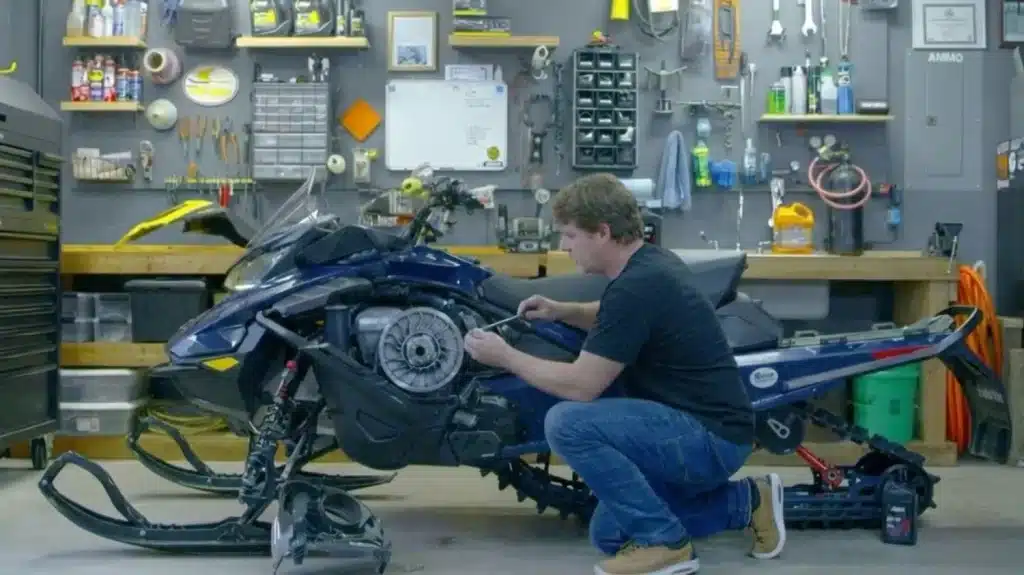UTV models in the crossover category are popular with quad enthusiasts. These vehicles are very versatile and can meet many needs with remarkable efficiency.
Their dump beds can carry a lot of material, both in terms of volume and weight. The cabs are designed to be welcoming and comfortable for driving hundreds of kilometers (well, most of them). The suspensions also contribute to comfort by offering good travel, very often with gas shock absorbers with rebound adjustment. Finally, these vehicles are designed to be responsive.
Without being high-performance UTVs, they can travel at very good speeds on forest trails. This versatility makes them the choice of riders who travel long distances with their vehicles.
Sniffing out a good deal, we see manufacturers playing the luxury card with closed-cab UTVs, loaded with all the options that bring them closer to automobiles. Think of the Polaris Ranger 1500 HD and XPEDITION, Can-Am Defender HD11 Limited, and CFMOTO UFORCE U10 Highland. Although attractive in terms of comfort, these vehicles require a much more substantial outlay than crossovers. For reasons of price and ongoing needs, the latter remain relevant.
As we have seen, there are many criteria that must be met for crossovers to be successful in the market. Manufacturers offer a variety of features to attract potential customers. Here is an overview of a few models to help you understand their main characteristics. Note: the order of the models does not constitute a ranking.
Can-Am Commander
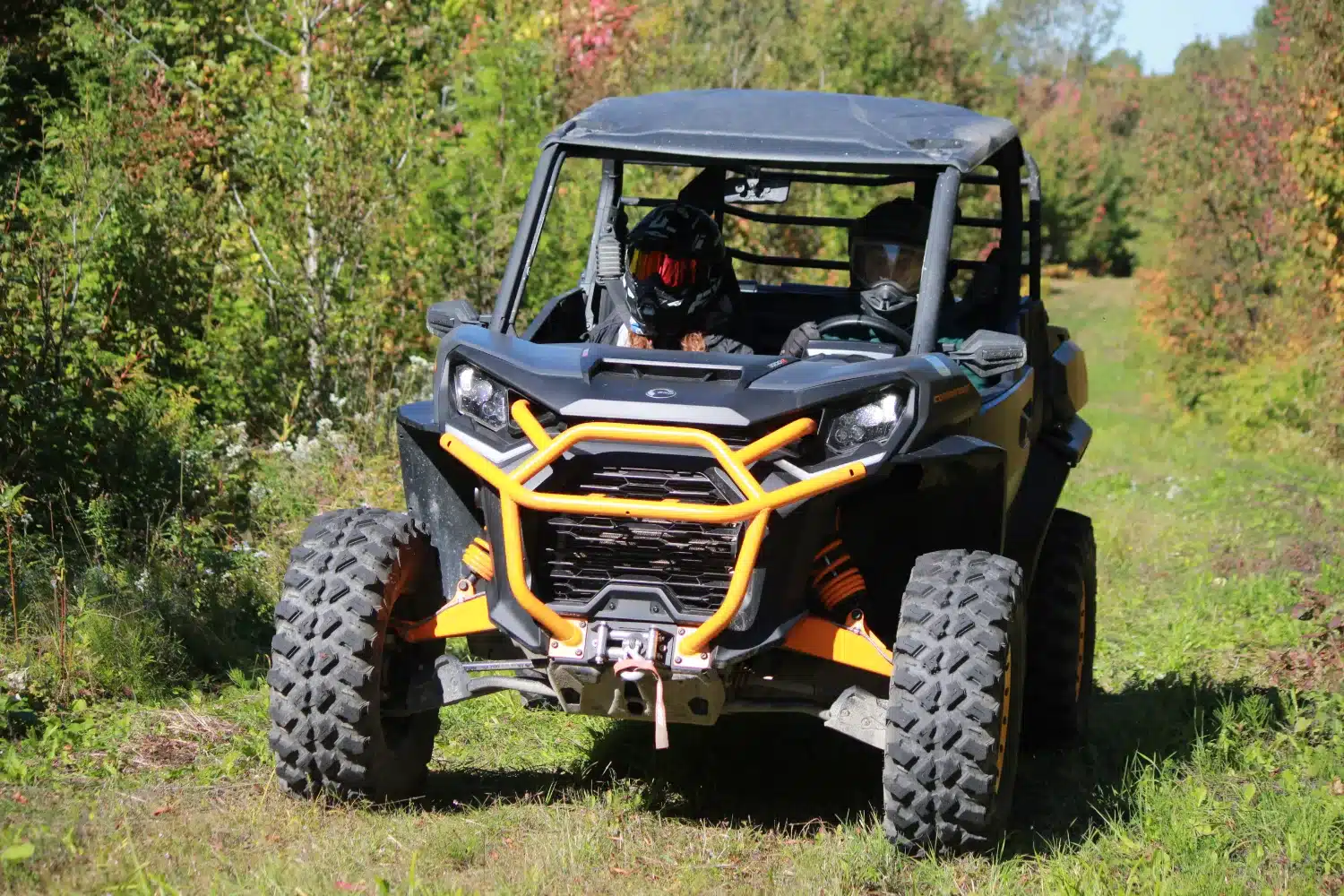
The Commander is popular with UTV enthusiasts. It is the only domestic manufacturer, and its products are well designed. Can-Am’s focus in designing this product is on the vehicle’s sportiness. The low driving position, comfortable and wraparound seats, and driver-oriented dashboard contribute to a roadster feel. The suspension is independent on all four wheels, and the four-wheel drive system with Smart-Lok technology is effective. Power steering is now standard on all versions. It should be noted that the sophistication of the suspension and drivetrain increases as the trim levels go up.
The Commander is designed for a wide range of users, and you can choose between two engines. The first is a liquid-cooled, 52-horsepower Rotax 700 single-cylinder engine. The second is the Rotax 1000R, a V-twin engine that delivers 100 horsepower. The Rotax 700 is obviously more limited in its performance, but it will satisfy those who just want to ride leisurely. To meet more needs, you can opt for a four-passenger version, or a more aggressive X Mr version is available to tackle the worst mud.
On the work side, the Commander can tow up to 2,000 lbs and carry 600 lbs in its dump bed.
Let’s sum it up in three words: sporty, versatile, efficient.
Suggested retail price range: $20,649 to $36,649
Honda Pioneer 1000
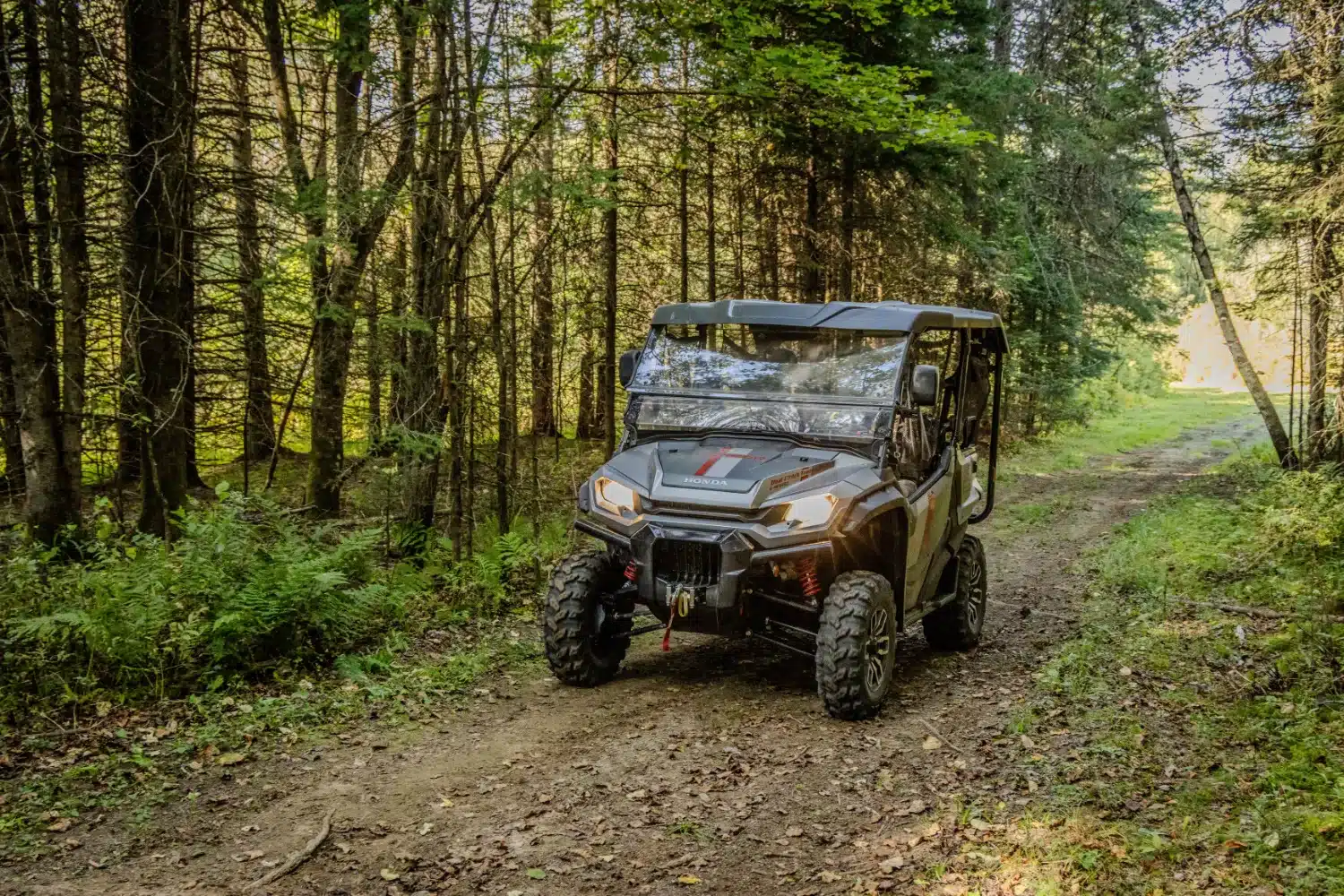
The Pioneer is faithful to Honda’s design philosophy. Once again, Honda offers its own technical solutions and does not allow itself to be influenced by other manufacturers.
The main feature of the Pioneer 1000 is the mechanics under the hood. The engine is a 999 cc twin cylinder that develops 77 horsepower combined with a six-speed DCT automatic transmission. This type of transmission is almost unique in the industry, as only the Can-Am Maverick R also offers it. When driving the vehicle, it’s nice to hear it shift gears like a car. Everything works really well with genuine engine braking, flawless gear changes, and smooth, reliable power transfer. The smooth and precise electric power steering makes the driving experience even more enjoyable.
The suspension doesn’t have exceptional travel, but it still offers a very good level of comfort, especially with the FOX QS3 gas suspension on the Trail versions. You can choose a three-seat configuration with a spacious bench seat with well-contoured seating, or five seats thanks to the clever integration of two bucket seats in the bed. The whole thing is modular, as the two seats can be folded down to recover the full load volume. Note that Yamaha offers a similar feature in the Wolverine RMAX Compact. However, the interior design is starting to show its age in terms of the dashboard layout, and the side protective nets are awkward to use.
Work performance: The Pioneer 1000 holds its own in the pack, with a towing capacity of 2,000 lb and a payload capacity of 1,000 lb.
To sum it up in three words: DCT transmission, surprising comfort, and modular cargo bed.
Suggested retail price range: $24,077 to $34,777
Polaris General
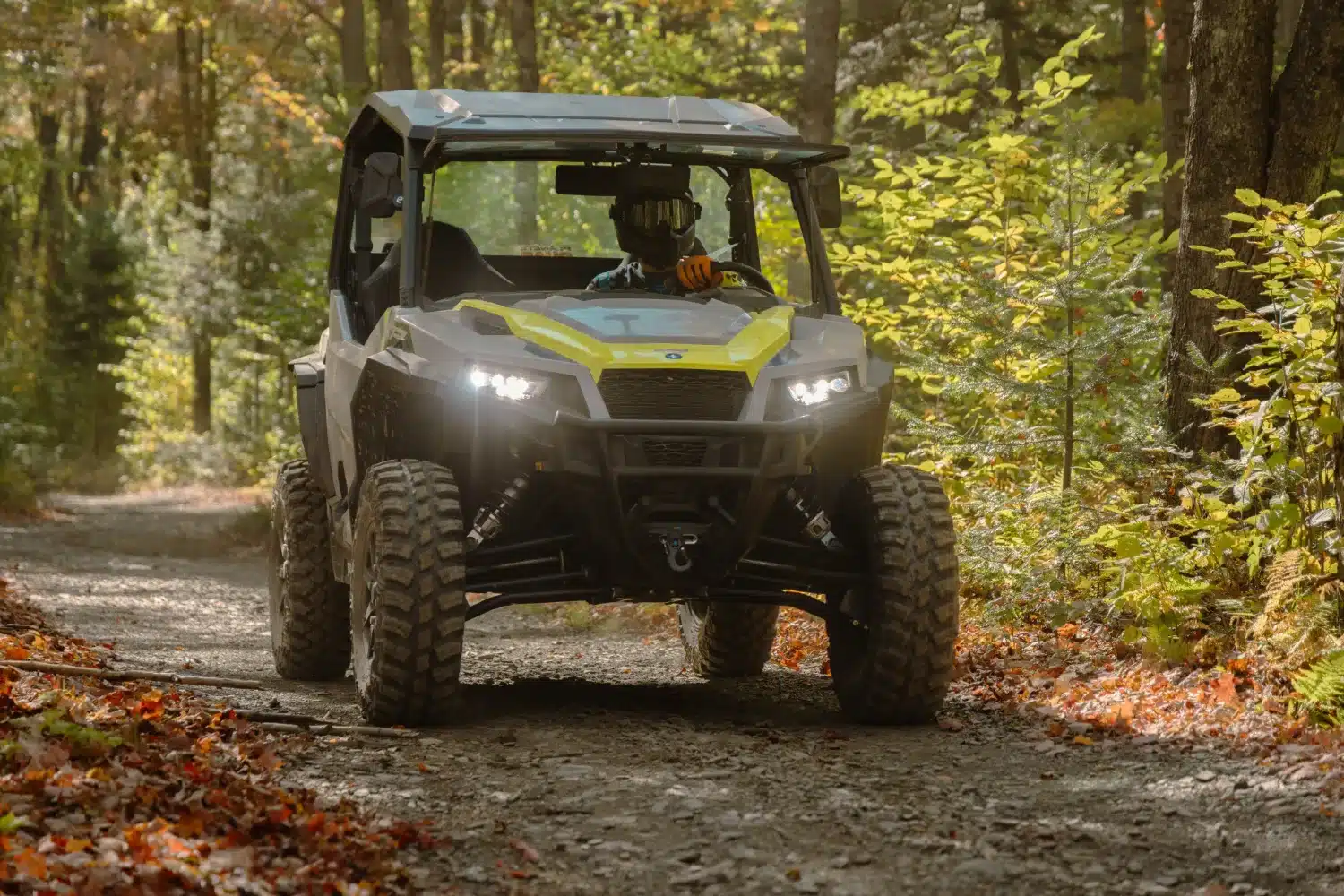
The General is the model that created this niche and has now been riding through the woods for 10 years. It is available in two main versions: standard and XP 1000.
All Generals are powered by the 999 cc Prostar twin-cylinder engine, which reaches the 100 horsepower mark, which is about average. The transmission is CVT, which works well with the engine. The main feature of this vehicle is the comfort with which it transports its passengers. The very spacious cabin has comfortable seats with a straight back. Access to the General is similar to that of an SUV.
The 14-inch long-travel, independent four-wheel suspension is one of the keys to this vehicle’s performance. Although the optional FOX 2.0 suspension on the General Premium does a good job, the General XP 1000’s suspension raises the bar even higher. The Walker Evans shock absorbers, adjustable in 20 clicks, can transform the vehicle’s handling to suit your preferences. Yes, the General can ride with a Buick-like cushioned suspension, but it never loses its composure when pushed.
We mentioned earlier that the General is available in two main versions, but only the XP 1000 can be equipped with four seats. As such, the onboard Fostgate radios and Ride and Command technology are only available on the high-end XP 1000.
On the work side, it can tow 1,500 lbs and carry 600 lbs in the bed.
Let’s sum it up in three words: comfortable cabin, highly effective suspension, pleasant to drive.
Suggested retail price range: $24,077 to $34,777
Yamaha Wolverine RMAX and Wolverine X2
The Yamaha name generates a lot of interest among ATV enthusiasts. When you hear that name, you think of reliability, enhanced performance, and uncompromising overall quality. Yamaha offers two models in the crossover segment.
Wolverine X2
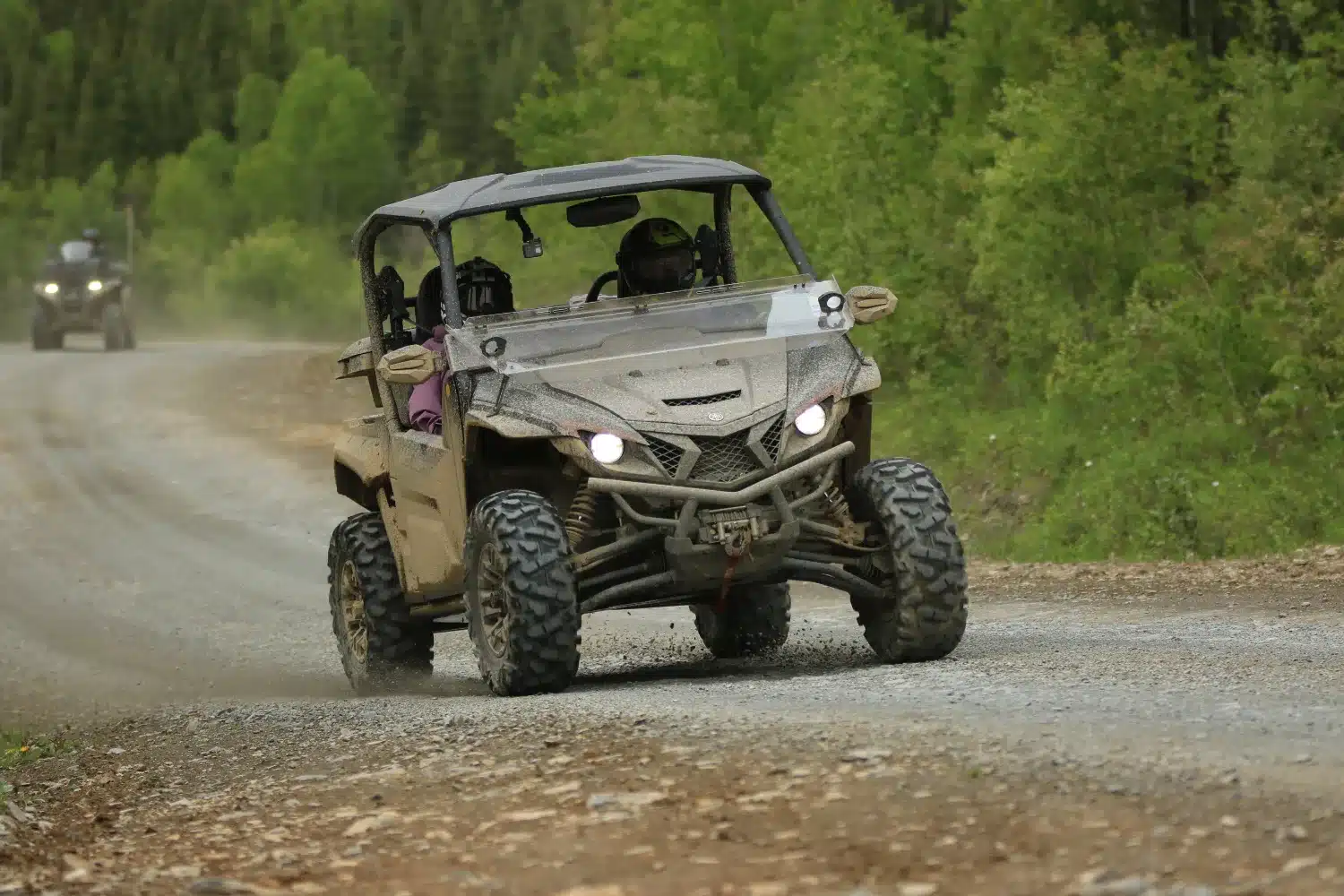
First, the small X2 hit the market with an 850cc engine. Then, in 2024, Yamaha added the RMAX’s 1000cc engine, but only in the two-passenger version. The smaller engine produces 55 hp, while the RMAX engine delivers 108 hp. Despite this significant difference, the smaller engine is still up to the task for touring or work, but its top speed is limited to 80 km/h. However, it is quieter than the RMAX engine. The transmission is the indestructible Duramatic CVT, which comes with a 10-year warranty from Yamaha.
The suspension has a travel of about 9 inches, which is less than that of the larger RMAX. However, during a 1,400-km trip around the Gaspé Peninsula with two passengers and luggage for seven days, it never bottomed out, and the passenger was able to take a nap while riding. So it gets the job done. Add to that comfortable seats and a cabin that provides the necessary space, and you have a user-friendly vehicle. If you want more space, you can opt for the four-passenger version, but only with the smaller engine.
On the work side, it can tow 2,000 lbs and carry 600 lbs in the bed.
Let’s sum it up in three words: cabin comfort, proven reliability, and more affordable.
Suggested retail price range: $23,849 to $27,499
Wolverine RMAX
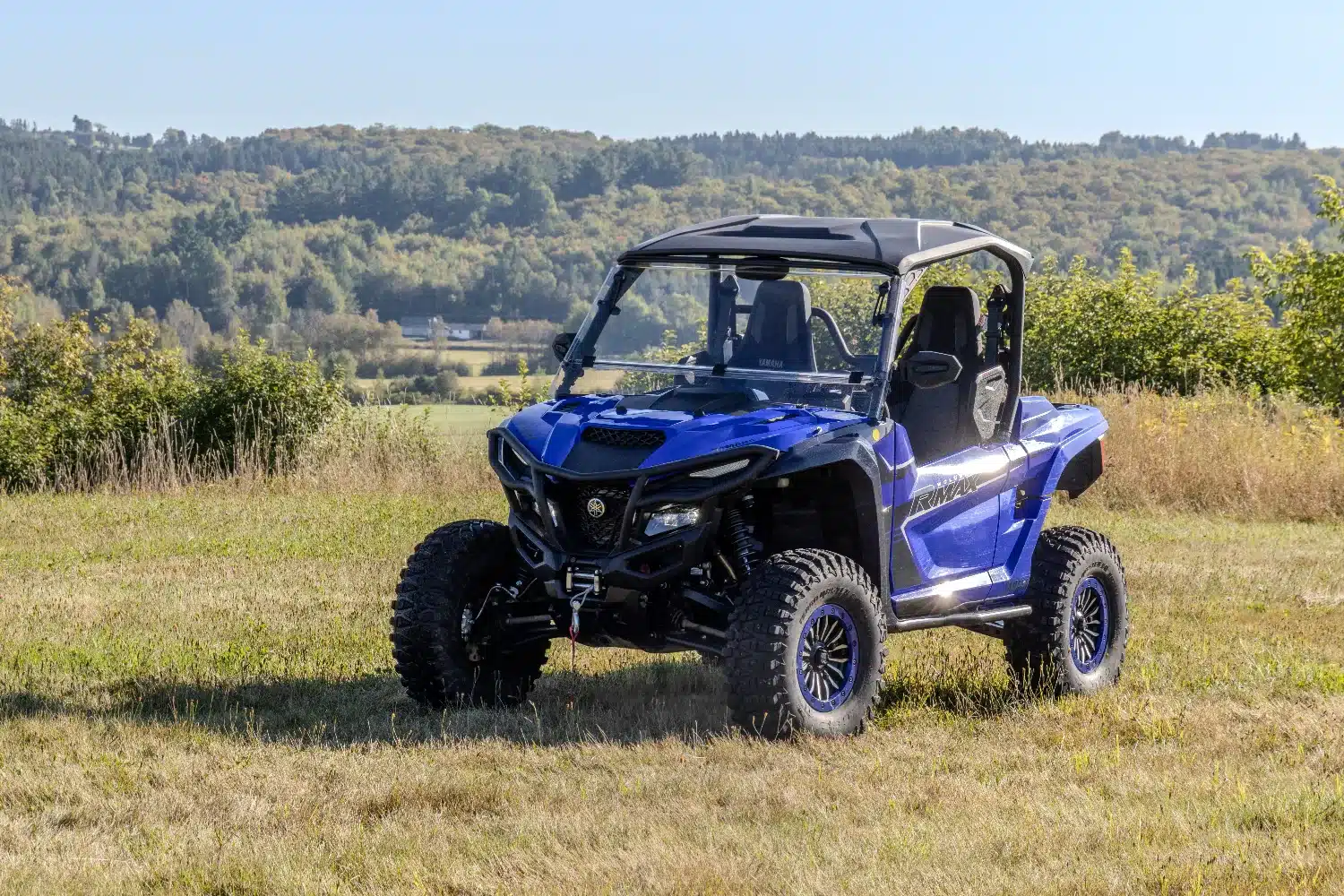
Yamaha has spared no expense in putting a fully competitive vehicle on the trails. First of all, the vehicle is now available in three body styles: the RMAX 2 with seating for two, the RMAX 4, which is a four-seater version with a separate cargo bed in the rear, and the RMAX 4 Compact, which is a four-passenger version with seating in the convertible cargo bed. This is a feature similar to that of the Honda Pioneer 1000.
From a mechanical standpoint, the engine is a powerful 999cc parallel twin cylinder with 108 horsepower. It comes with three power modes. Trail Mode provides smooth, linear acceleration, Sport Mode provides lively acceleration, and Crawl Mode provides smooth acceleration, moderate throttle response, and maximum engine braking. The Ultramatic CVT transmission works in perfect harmony with the engine and is backed by a 10-year warranty from Yamaha. In addition, the power steering is adjustable to three levels of sensitivity.
The nature of the RMAX’s handling will depend on the version you choose. The differences between the versions are significant. The RMAX 2 Sport has a suspension equipped with FOX 2.0 dual-adjustable shock absorbers that are rather firm, favoring sporty driving and are roughly on par with the Can-Am Commander 1000R XT-P. If you want a comfortable ride, you should consider the RMAX XT-R, whose FOX 2.0 QS3 gas suspension is calibrated for comfort. As for the Limited, it is equipped with FOX 2.0 IQS shock absorbers that the driver can adjust directly from the dashboard. All RMAX models feature independent four-wheel suspension with generous travel of 14 inches in the front and almost 17 inches in the rear.
Life on board is pleasant thanks to the adequate passenger space and excellent seat quality. Ride comfort will depend on the version you choose. The RMAX 2 Sport is bumpier than the XT-R or Limited, which are more comfort-oriented. But in all cases, the shocks are never brutal or excessive.
On the work side, it can tow 2,000 lbs and carry 600 lbs in the bed.
To sum it up in three words: three body styles, proven reliability, and outstanding overall performance.
Suggested retail price range: $30,849 to $38,749

